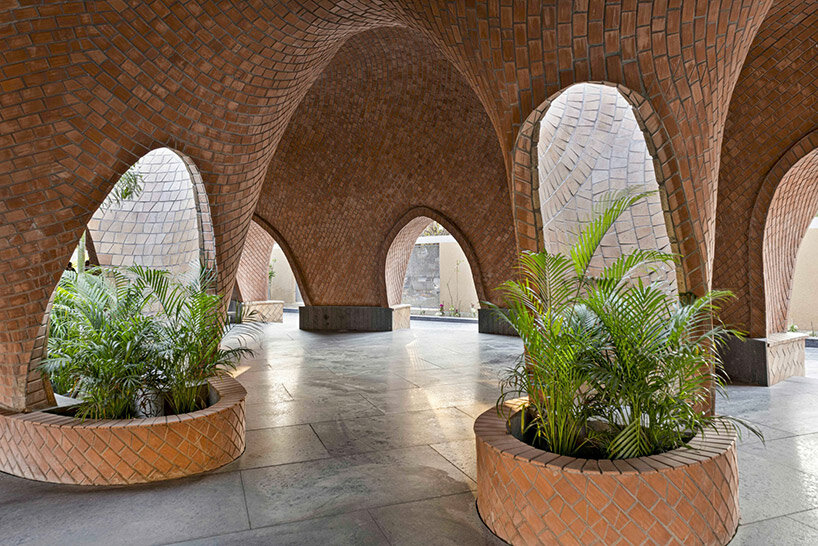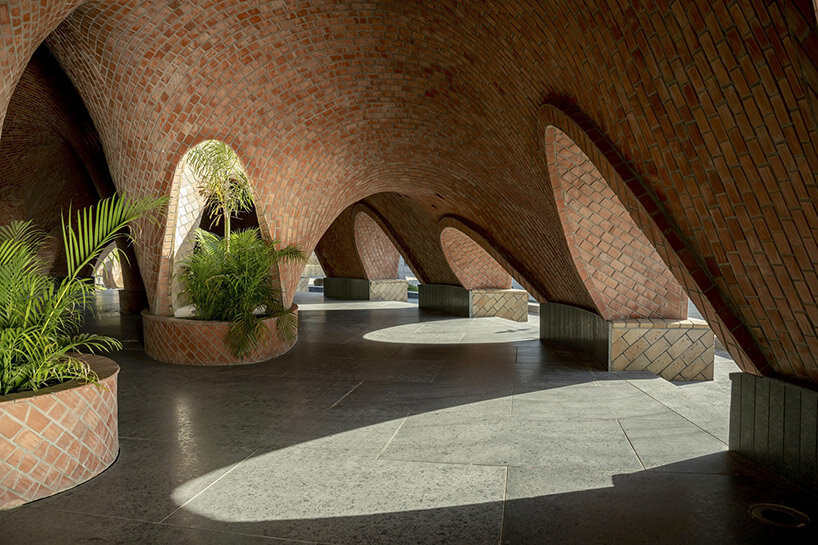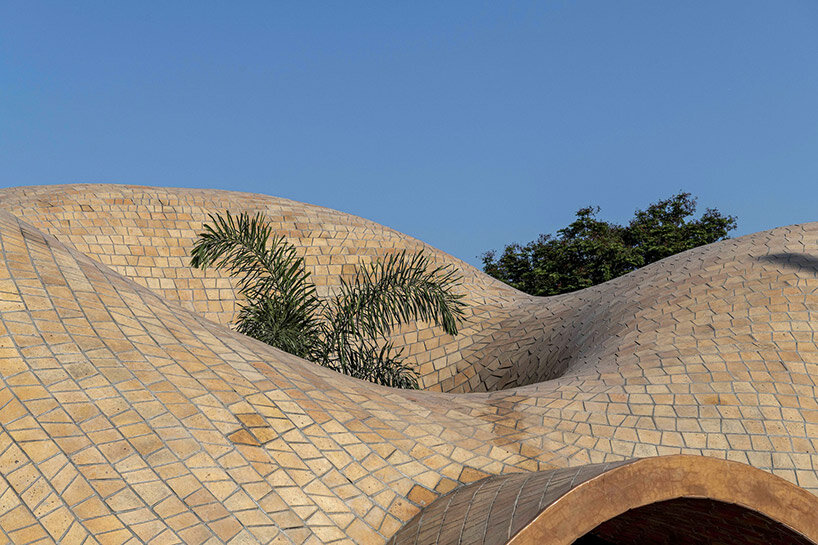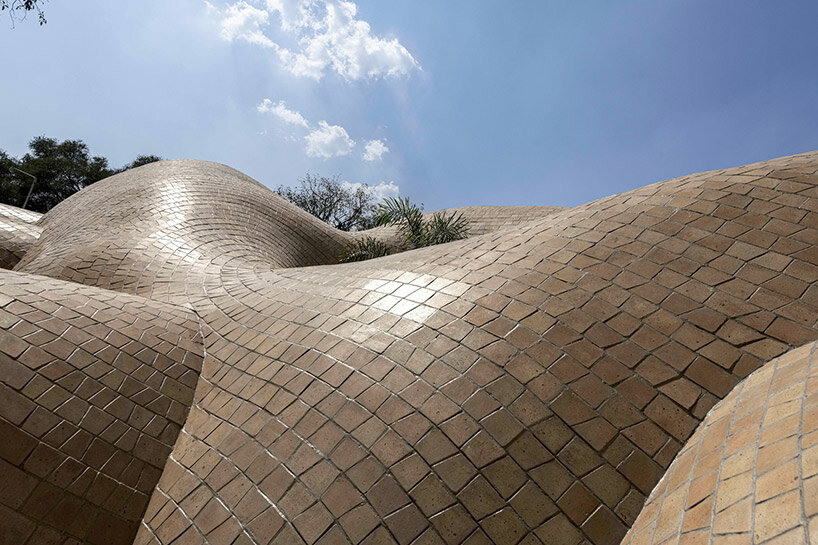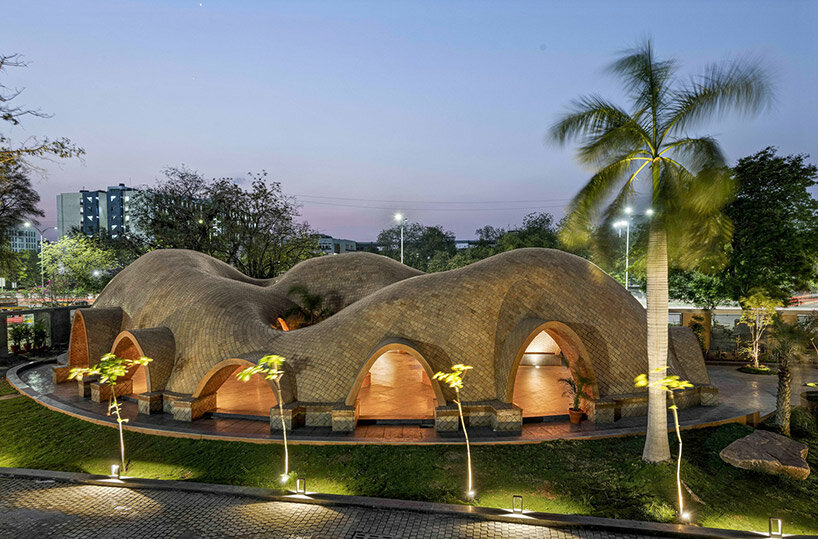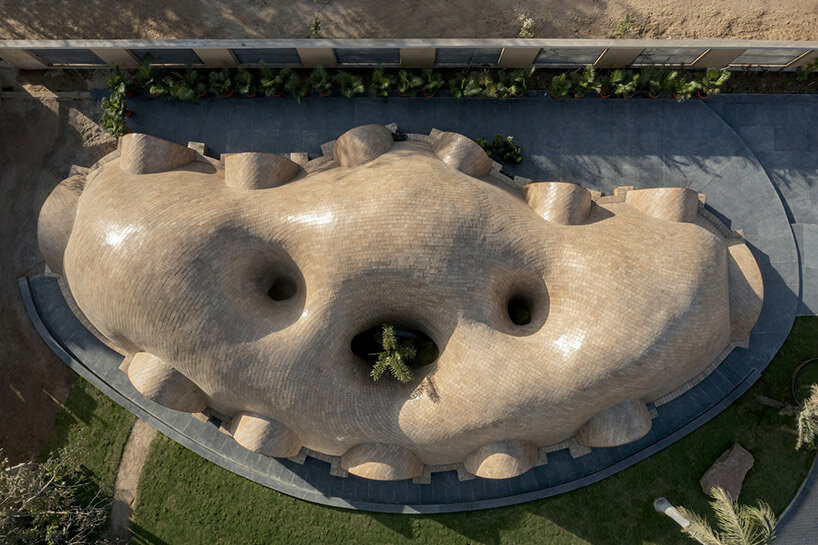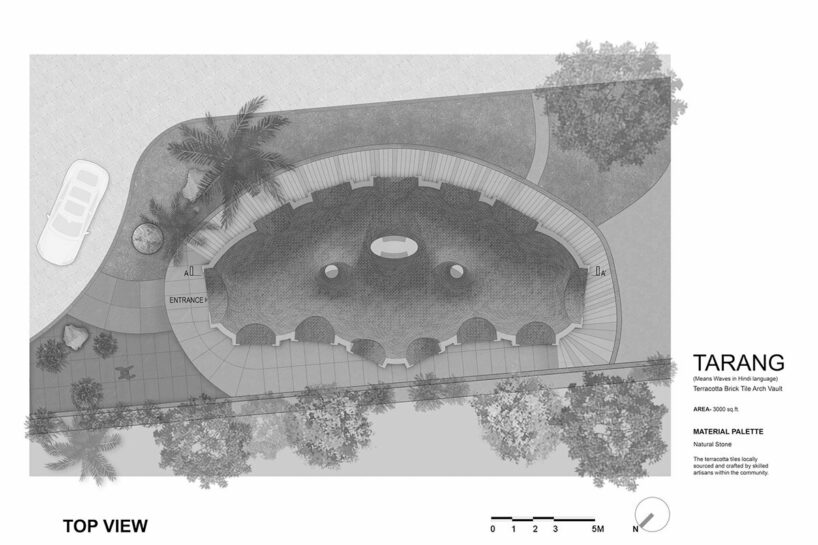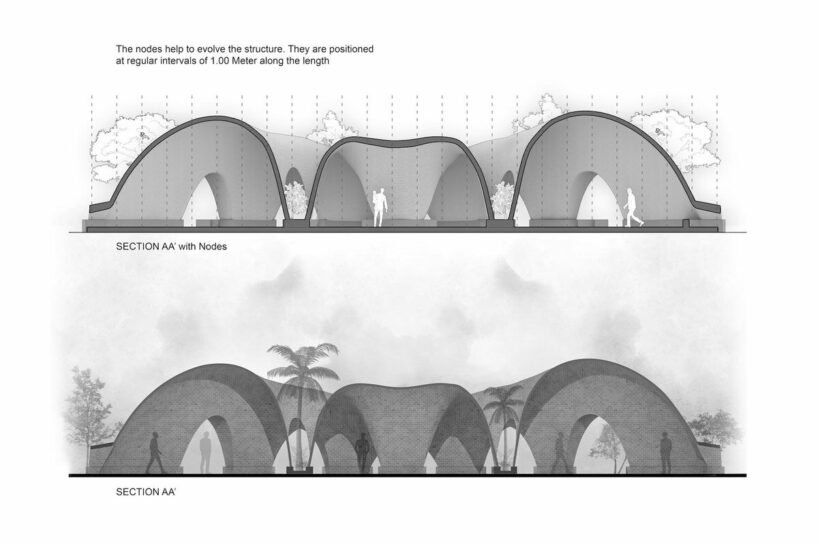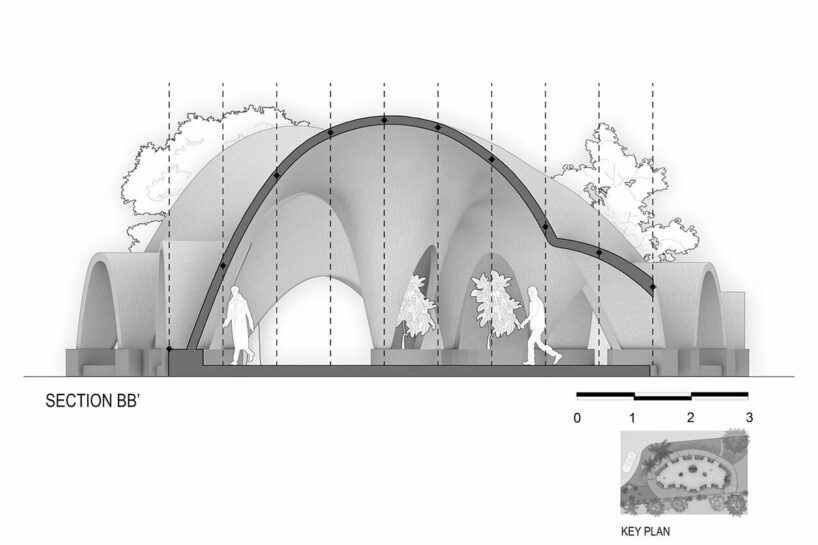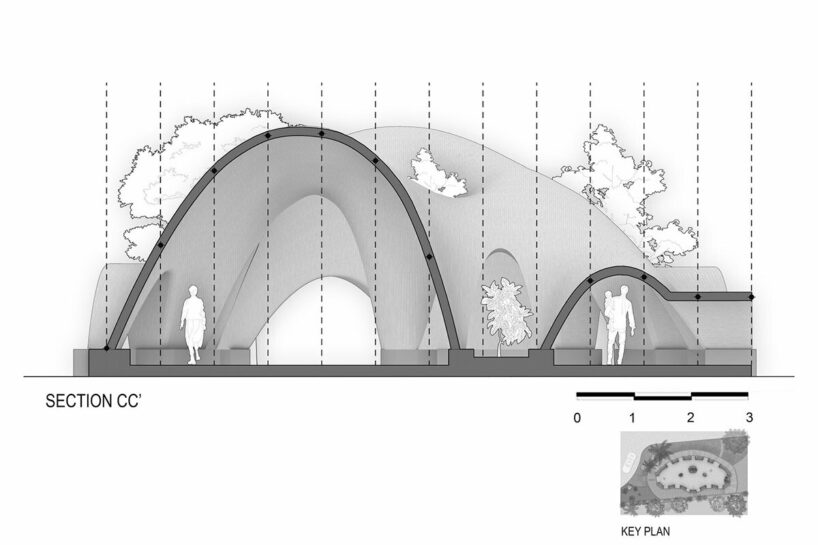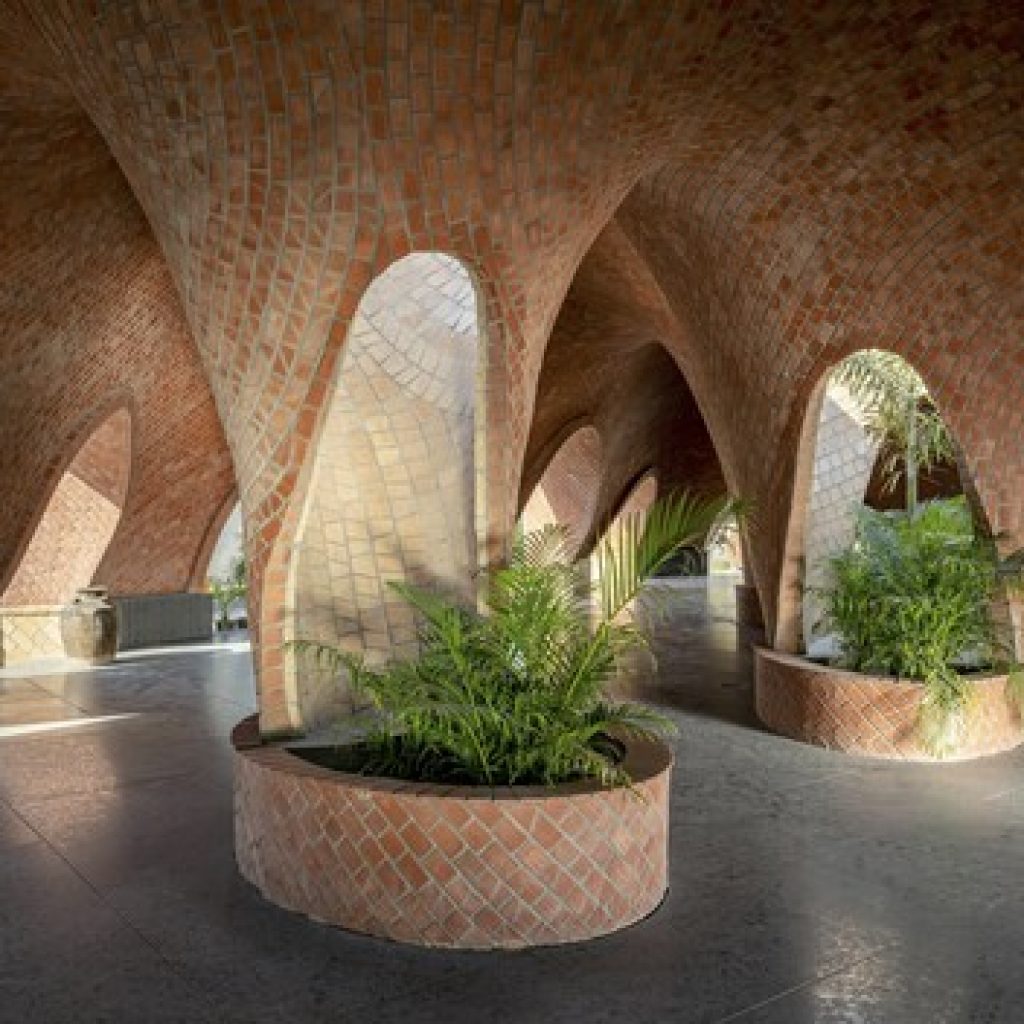location: Gandhinagar, India
lead architects: Snehal Suthar, Bhadri Suthar
completion: 2023
photography: Photographix, Vinay Panjwani
The newly completed TARANG Pavilion, located in Gandhinagar, India, exemplifies the innovative and thoughtful design approach by The Grid Architects. The taking shape as a sculpturally vaulted enclosure, the pavilion is designed to encourage a meaningful dialogue between the past, present, and future, creating a built environment that is at once visually captivating but also respectful of the natural environment.
The primary intent behind TARANG Pavilion is to create a versatile space that accommodates various activities, both within and around the building. The architects conceptualized the pavilion as a dynamic gallery space, meticulously designed to adapt and evolve seamlessly. Its purpose is to serve as an immersive exhibition platform, where the interiors transform into canvases, showcasing featured products and creating engaging experiences for visitors.
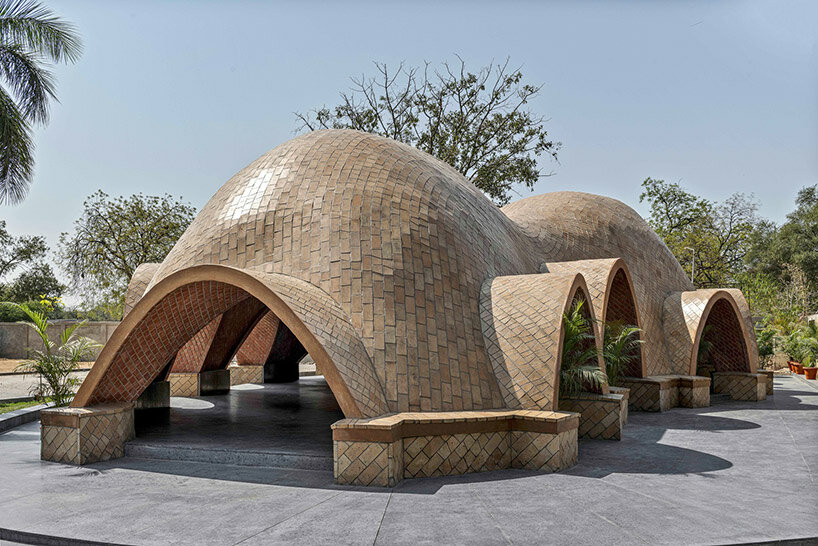 image © Photographix
image © Photographix
THE GRID ARCHITECTS EMPLOYS NATURAL STONE AND TERRACOTTA TILES
With its TARANG Pavilion, The Grid Architects place a strong emphasis on environmental sustainability by minimizing the carbon footprint of the built space. The architects primarily source materials locally, giving preference to those with low embodied energy. Natural stone and terracotta tiles play a significant role in the project’s construction, along with a remarkable technique that involves spanning without steel and traditional construction practices that eliminate the need for additional structures to support arches.
What’s more, the project prioritizes upskilling the masons involved in the construction process. This not only promotes sustainable building practices but also celebrates the artistry of the workers, highlighting their craftsmanship and traditional construction techniques.
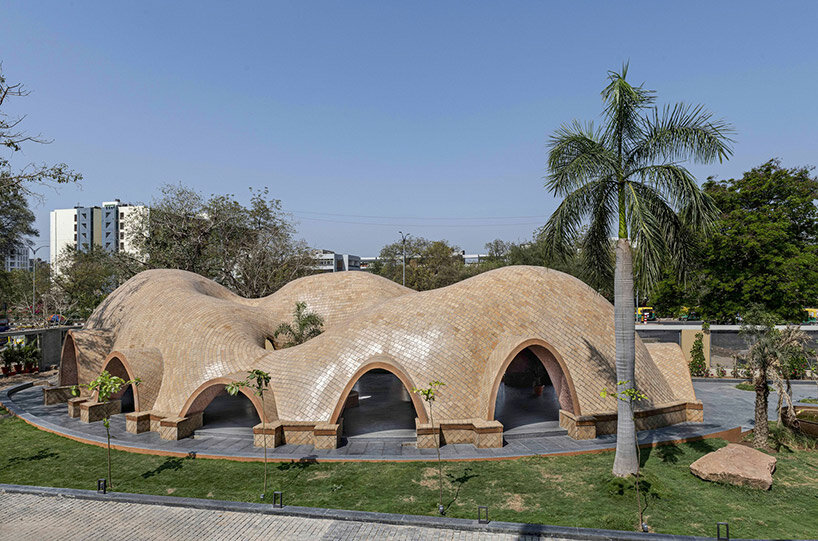 image © Photographix
image © Photographix
SHAPED BY GENTLY SWELLING VAULTS
The TARANG Pavilion is presently one of the largest terracotta tile arch vault structures in India. The project by The Grid Architects takes shape with gentle upswells, soft swoops, and harmonic waves. The architects have crafted an ambiance of evocative silence, where light speaks, wind sings, and earthenware roofing produces melody. The undulating form of the pavilion, rooted in a biophilic design approach, creates an intimate and familiar space that is profoundly elegant.
The interplay of light and shadow within the undulating structure, with its voids and in-between spaces, playsfully teases the viewer, brushing past the realm of conventional walls. The structure engulfs the space, where undulations become walls and walls become an enclosure. It becomes evident that the voids and exposed terracotta tiles between the undulations are integral to the unity of the edifice. The design merges seamlessly with nature, as if the built form emerged from the core of the earth itself.
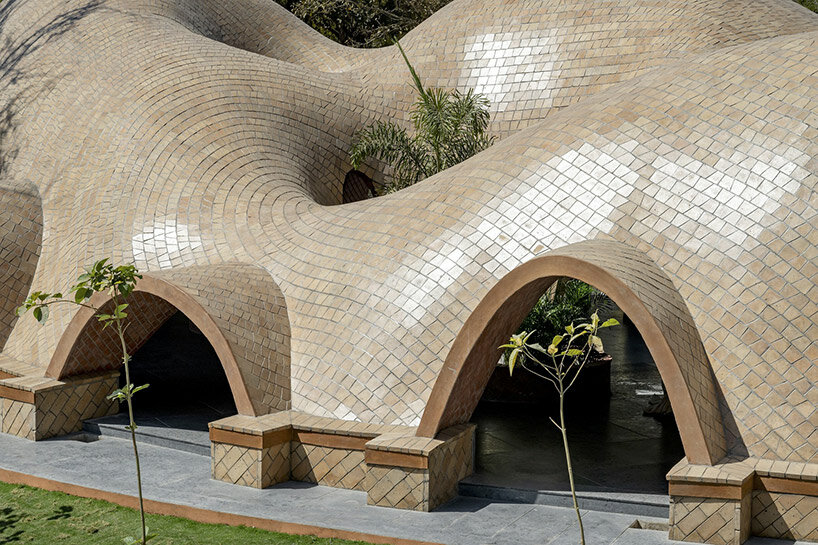 image © Vinay Panjwani
image © Vinay Panjwani
AN ORGANIC AND INTUITIVE CREATIVE PROCESS
The creative process behind the TARANG Pavilion film was organic and deeply personal. It explores the intrinsic human desire for connection and serves as a poignant portrait of that particular moment in time. The terracotta material itself becomes a medium for the transfer of feelings, while the interplay of light and shadow animates the interiors, creating unique pockets of diffused light.
The design process for the pavilion was driven by intuition and a deep desire to understand how space and nature could be truly elevated and dignified. Through daily observation of shifting light and sun movements, the architects discovered how the space would shape-shift, resulting in a harmonious and dynamic surrounding. The interior spaces effortlessly fell into place, complementing the overall design and providing different experiences throughout the day.
 image © Photographix
image © Photographix
According to the architects, the TARANG Pavilion embodies three key principles — a deep respect for the environment and sustainability, an appreciation for craftsmanship, and a reverence for history and cultural heritage. The project showcases the wisdom of skilled artisans who possess extensive knowledge of traditional building techniques used in India. This emphasis on craftsmanship reflects the architects’ values and their commitment to preserving cultural heritage.
 image © Vinay Panjwani
image © Vinay Panjwani
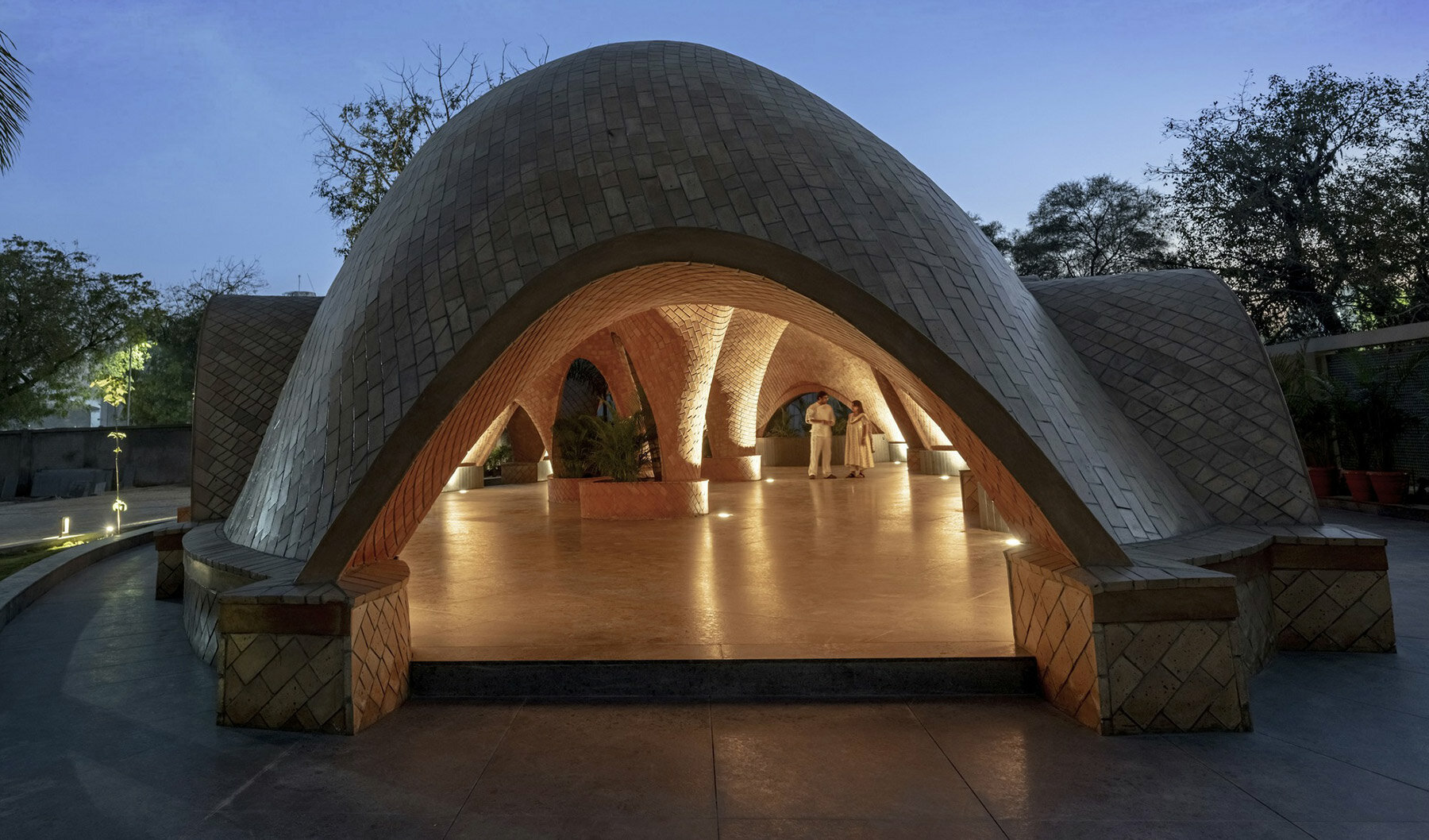
image © Vinay Panjwani
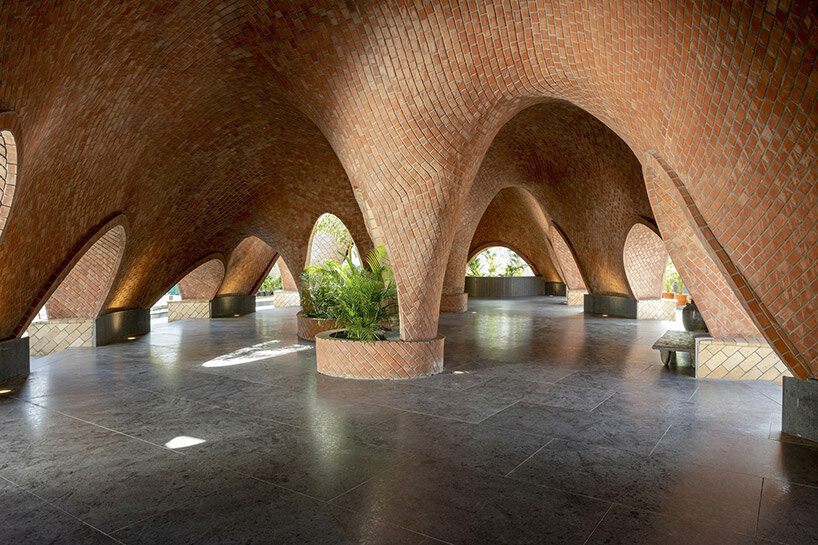 image © Vinay Panjwani
image © Vinay Panjwani
image © Photographix
